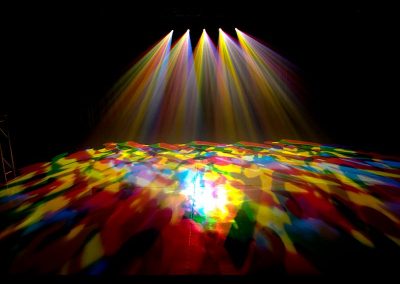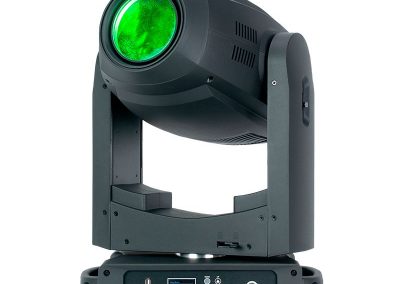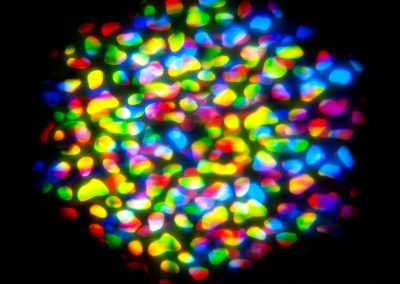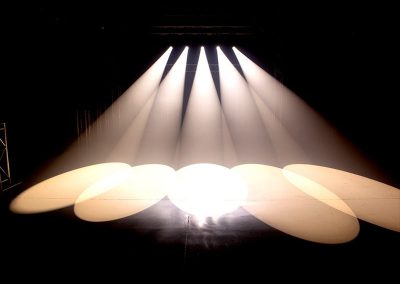ADJ Focus Spot 6Z – Demo / Review

Video Review By Jack Wilson and Text Review by Ryan Lockett (Lofty)
As a brand, ADJ have been well established across the globe for their wide range of solutions in the mobile entertainment, event production and installation markets alike – From the Pocket Pro to the Vizi series and everything in between. The Focus Spot range of moving heads in particular has been a hit in the UK since it was released back in 2016 and has continued to evolve over the past four years to bring us what’s now known as the Focus Spot 6Z.
Overview
Getting straight into the box and the first thing that caught my eye was the use of powerCON TRUE1 power connections, both input and output, instead of the original powerCON connections featured in previous models. Many high-end brands in sound, lighting and AV are gradually phasing out the use of the powerCON in favour of powerCON TRUE1 connections and events companies are following suit so it is great to see ADJ pushing these as a flagship connection.
In addition to a change of power connection, the 6Z also integrates ArtNet and sACN input and passthrough options to take in signal through the integrated etherCON ports along with the standard 3-pin and 5-pin DMX connections to broaden your control options. This is also a feature mostly found on higher end products aimed at the touring/rental market who are more likely to utilise these methods of control over networks for larger rigs, especially taking in to account the high channel count of the fixture through either of the three DMX channel modes: Basic (21 channels), standard (25 channels) and extended (29 channels).
On the front, a colour LCD display is utilised for information and menu functions. To access the menu, simply hit the ‘MODE’ button and use the up, down, left, right and enter buttons to navigate. Every single aspect of fixture information and control can be found within this menu, from DMX setup and built-in programs to fixture testing and firmware information. Also found on the front of the unit is a USB port labelled ‘service port’. This is what enables you to update the 6Z’s firmware, should there be an issue with the fixture’s programming or an update for further functionality.
Great Features
One great feature of this fixture is that you can power up the menu through an on-board battery by holding down the ‘MODE’ button on the front of the unit which brings the colour LCD display to life. What this means is you can set your DMX address, network control protocol (if you are not using the 3-pin or 5-pin connectors), channel mode and check fixture information before mounting it onto your rig. This is especially handy for overhead truss rigs as you can prepare the fixture on the ground before it is out of reach without needing to run a separate power source on the ground. It is worth noting that the battery power supply will only power up the menu and not the complete fixture as it is only designed for preparing/programming and not testing/running. If that were the case the battery would deplete very quickly and render the feature pointless so you will need to have a power cable at the ready if you were to run this fixture.
Looking at more of the physical attributes of this fixture, both pan and tilt yokes can be locked into position quickly and easily with the low-profile locking levers. These are very handy to keep the fixture still during transportation, rigging and even servicing. Some other fixtures tend to have the tilt lock from the front through to the back of the yoke which makes easy to knock accidentally.
Fortunately, the 6Z builds the switch into the side of the yoke so not only is it discreet, it also prevents the switch from being knocked. The attention to these smaller details by the R&D department is very impressive on this fixture.
What’s inside?
Now to look at the inside of the fixture. 14 colours (plus white) are available between the fixture’s 2 gobo wheels. One of these wheels includes colour correction (CTO, CTB) and UV filters for more flexible uses. There are also 2 rotating gobo wheels inside, each with 7 gobos (plus open) to give you 14 different gobos. It’s worth noting that these gobos can be overlaid and focused between each wheel in a ‘morphing’ effect, meaning that you can essentially create 189 different effects by combining the gobo wheels with either of the two built in prisms or simply leaving the prism out for some cool mid-air results.


On the topic of prisms, the 6Z is loaded with a rotating 6-facet circular prism and a rotating 5-facet linear prism. These prisms cannot be overlaid but can be switched between the two quickly and are also indexable to hold them in certain positions, a particularly handy feature for the linear prism! In the last section of the effects we have the variable frost filters. ADJ have added 2 filters to this and for good reason too. The first filter is a heavy frost and gives a wider wash which works best on the open gobo. The second filter is a lighter frost and creates a slightly blurred edge, making it ideal for gobo and prism effects.

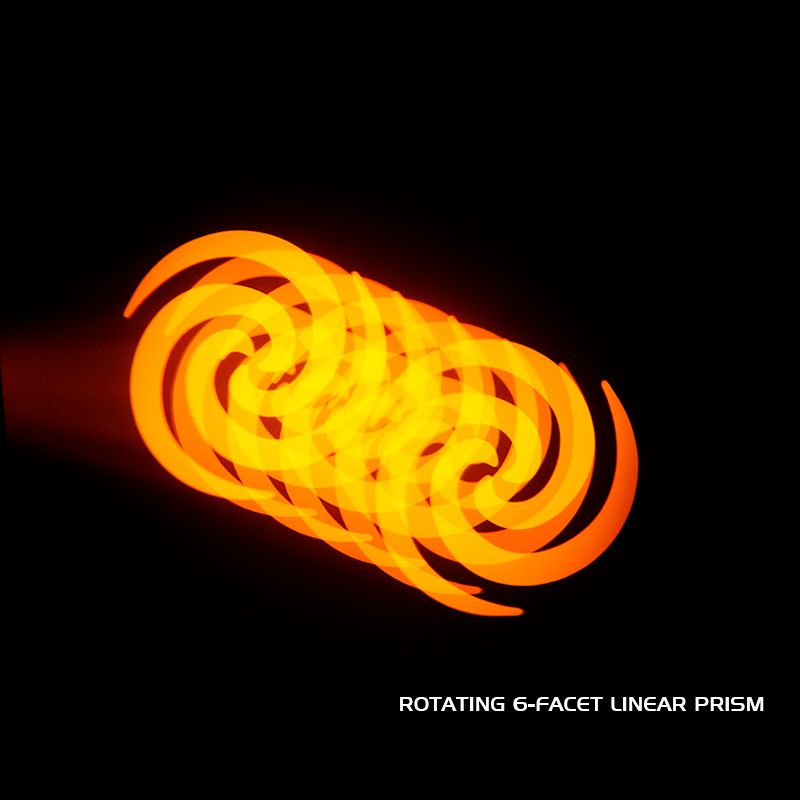
The Focus Spot series has been known to pack a punch whilst maintaining a compact form factor in comparison to equivalent fixtures on the market. This has always been a contributing factor to the success of the series and the 6Z is a testament to it: Standing at up to 56cm and weighing in just under 20kg!
The colour wheels built-in to the fixture really caught my eye as I flicked through colours on both wheels. Colours appear more saturated in comparison to previous models in the series. This is especially noticeable on reds, yellows, deep blues and even ultraviolet which all have an even better effect through the wide frost filter. Speaking of UV, given the saturation of the other colour filters it would be a crime not to mention the depth of the UV filter when compared to similar lighting fixtures, those of which appear a little more unnatural against the Focus Spot 6Z. The speed range of colour changes is also very impressive while using the ‘colour scroll’ feature. The motors do not stutter on extremely low speeds but also handle maximum scrolling speeds with ease.


Both gobo wheels contain metal gobos (with one glass gobo on wheel 2) to make up the 14 gobos available which are very finely cut to make the resulting effect crisp and sharp when in focus. As previously mentioned, you can overlay the gobo wheels for a ‘gobo morphing’ effect which also yield fantastic effects whether they’re projected onto a surface or focused in mid-air for an aerial effect. Both wheels are rotatable and can rotate in different directions at different speeds simultaneously. As with the colour wheels, the motors can easily cope with smooth gobo rotation at low speeds which to me is perfect for background music with static lighting.

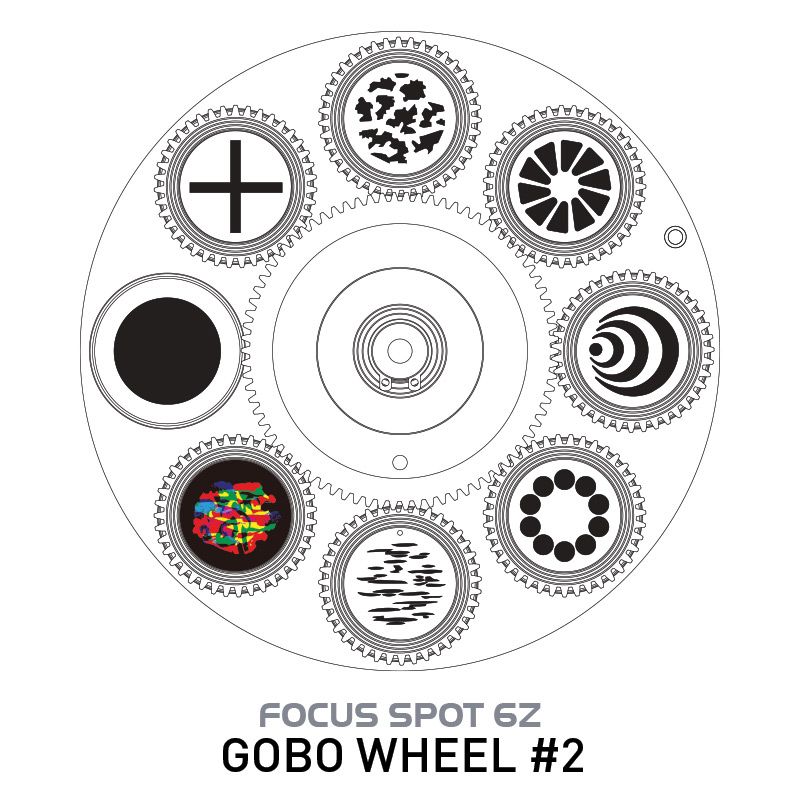
The focus/zoom assembly is considerably faster than the previous generations, making zooming and focal points easier and quicker to adjust. It also gives you opportunities to create different zoom chases thanks to the variable speed motor. Another nifty design aspect is how the configuration of the LED engine combined with the high-quality optics produce a sharp projection with no hotspots. This is what happens when certain parts of the projection are brighter than others which can be caused by lower quality optic assemblies or uneven coverage from LED engines. Higher quality optics and focus assemblies also help combat soft edges on certain gobos which I can safely say will not be an issue on the 6Z. The zoom on the 6Z ranges between 9-28 degrees which is impressive for a spot fixture. To find a wider zoom range on a moving head with similar functionality, you would be looking into hybrid fixtures which tend to have higher price brackets and are often too big to justify for mobile entertainment.
Also included are two frost filters, one light and one heavy. The lighter frost is used for slightly blurring the edge of gobos and prisms whilst the heavier prism provides a soft wash type effect.


Standard and extended DMX channel modes enable 16-bit pan and tilt control to enable finer movements on the pan and tilt yokes. Making slower movements smoother and positioning more accurate. 16-bit control also applies to the dimmer in the extended channel mode to smooth out the LED dimming over DMX. The way this works is by adding more steps in a separate channel, normally labelled as ‘fine’ adjustment. A standard 8-bit DMX channel value ranges from 0-255 (256 steps in total) so by using a second channel, each of those steps then has another 256 steps between them. That means 16-bit control gives you 65,536 steps between the highest and lowest value in total compared to just 256 steps in 8-bit control. This is how 16-bit control makes movement and dimming much smoother in modern fixtures.


Conclusion
Having used the Focus Spot TWO and Focus Spot THREE Z in the past, I have been blown away by how far the Focus Spot series has progressed in the past four years. A few design quirks that I would normally see on comparable fixtures have all been properly thought out by the R&D team on this model and to say the 6Z is an amazing spot fixture is a huge understatement! Every aspect of the 6Z has been carefully considered with the mobile entertainment and smaller event production companies in mind to produce what I can only describe as the ideal spot moving head for those looking to take their lighting rig to the next level.
Ryan Lockett (Lofty)
Technical Assistant at Kent Media Group








